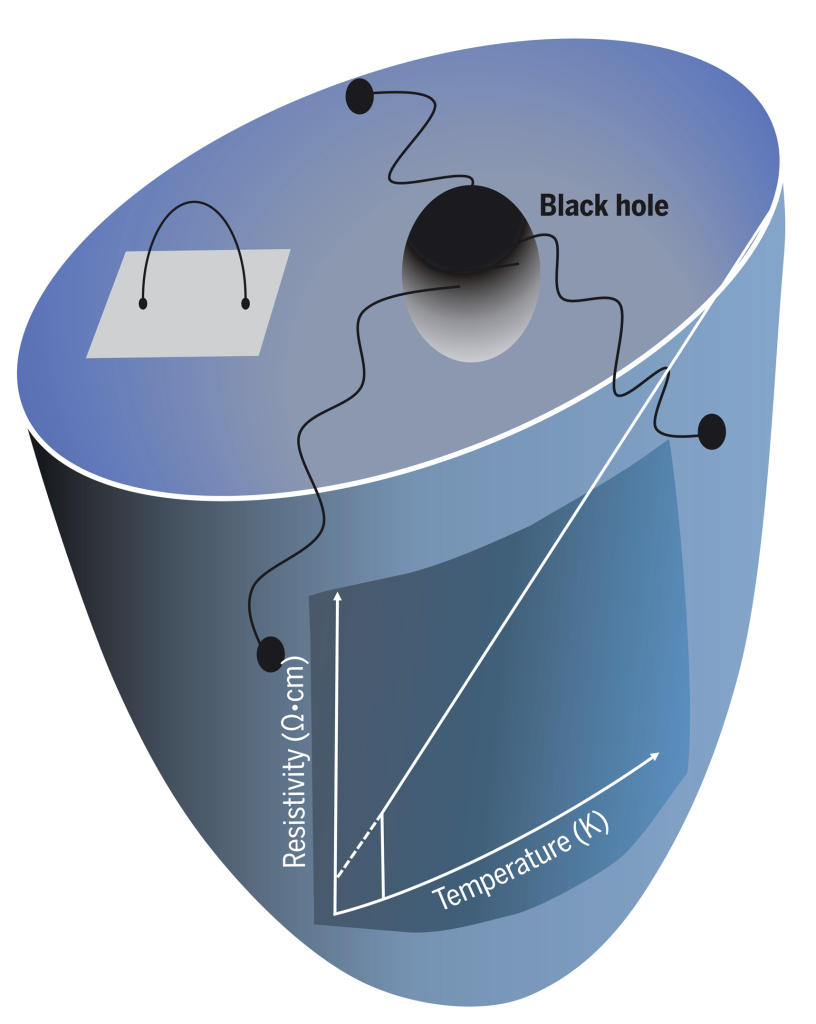Stranger than metals
The discovery of strange metals dates back three decades to when they were first encountered within a family of high-temperature superconductors known as cuprates. Superconductors, below a critical temperature, exhibit zero resistance to the flow of electrical current. In the superconducting state, electrons cease to behave as independent particles (scattering off one another and phonons) and form a collective entity that leads to superconductivity. One would expect a superconductor to transition into a normal metal as the temperature surpasses the critical point. The cuprates instead turn into strange metals, which have now also been observed in organic molecular crystals, heavy fermion materials like YbRh2Si2, YbAlB4, and magic-angle graphene bilayers, among other materials.
The behavior of strange metals is quite strange. In a normal metal, if phonon scattering is negligible, the resistivity exhibits quadratic temperature dependence, for phase-space reasons that are independent of the dimensionality of the material. At higher temperatures, the resistivity plateaus when reaching a saturation point called Mott-Ioffe-Regel limit. In strange metals, the resistivity varies linearly with temperature, which cannot be justified by any phase space argument, and its resistivity surpasses the MIR limit–often by a factor of 10 or more. These observations suggest that the strange metal hosts a densely quantum-entangled state in which individual electrons have no meaningful identity.
One promising avenue for explaining strange metals is the use of holographic duality techniques based on the AdS-CFT correspondence–an approach being pursued by string theorists who have started calling themselves “holographers.”
To learn more about strange metals, read a recent review paper by professors Phillips, Hussey, and Abbamonte here.

Comments - No Responses to “Stranger than metals”
Sure is empty down here...